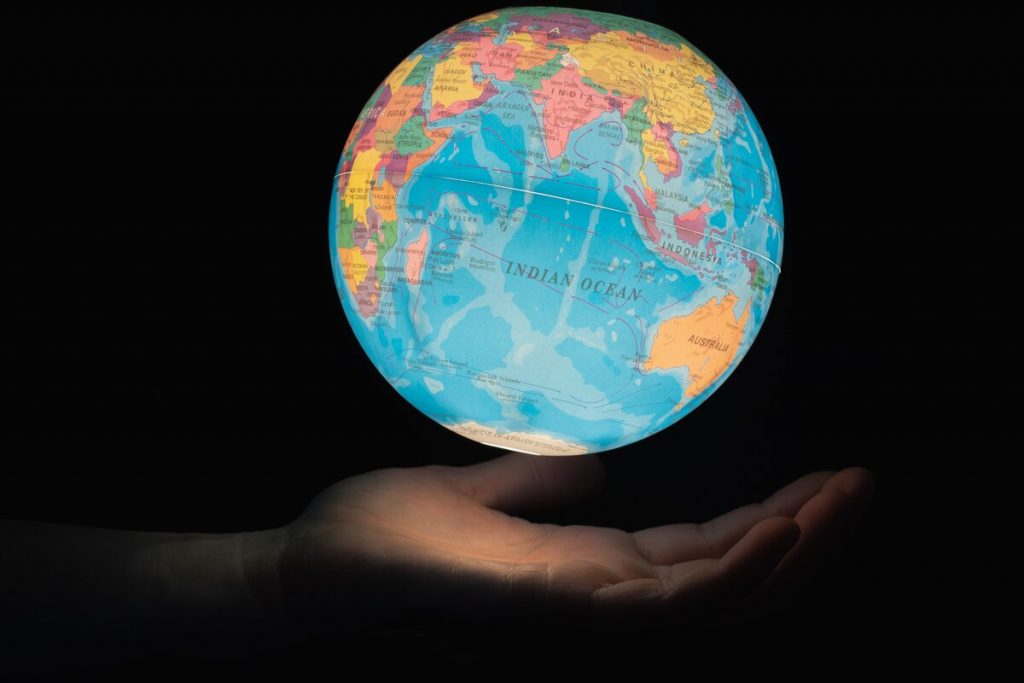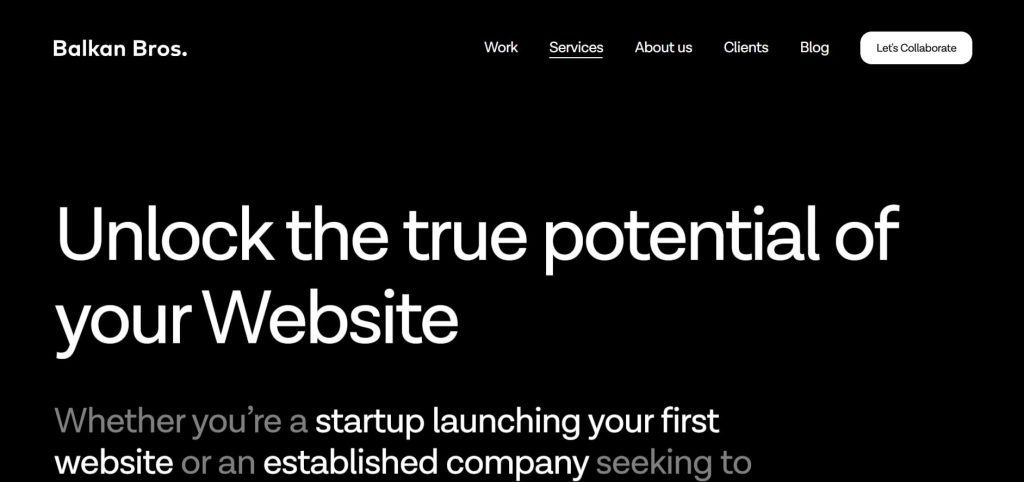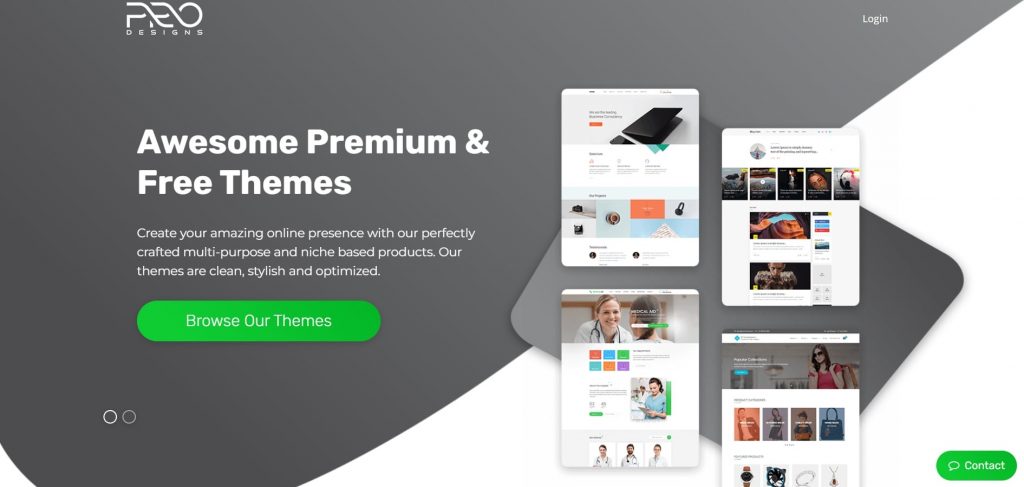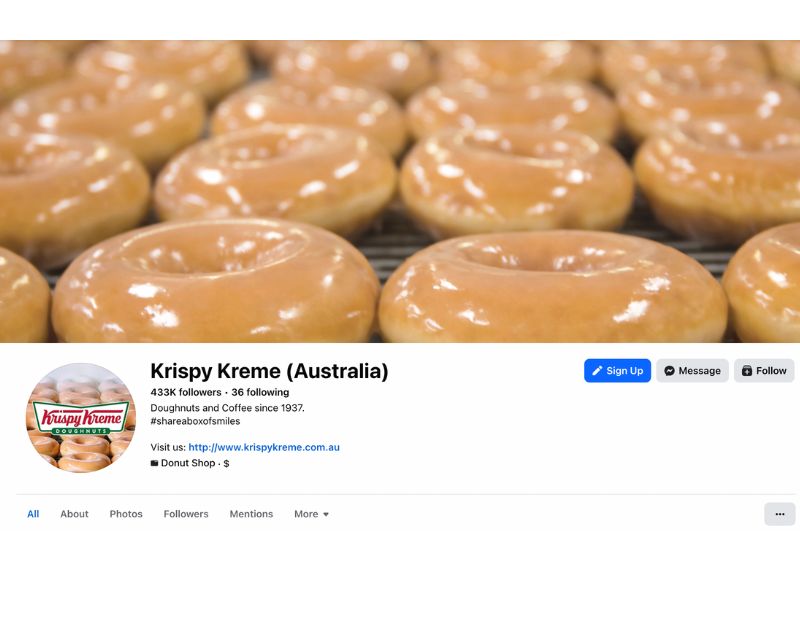Business
Global Expansion Strategies: Definition, Elements, Benefits, and Examples
Published
2 years agoon
By
Kai Kelis
If your company has gained traction in national markets, it’s high time you tap into international audiences. Expanding your business globally is one way to extend your reach outside your geographical base. It’s a way for your business to augment the company’s bottom line and multiply it a hundredfold. You need to execute a well-thought-out expansion strategy. Here’s everything you need to know on global expansion strategies and some examples to help you kickstart yours.
What are global expansion strategies?

A global expansion strategy is a comprehensive plan that outlines how a company intends to enter and establish a presence in international markets beyond its domestic borders. This strategy involves a series of steps and considerations. These are primarily aimed at maximizing growth opportunities while mitigating risks involved with entering new markets.
It encompasses various aspects, such as market research, target market selection, market entry modes, localization, cultural adaptation, legal and regulatory compliance, and resource allocation. A well-executed expansion strategy can lead to increased market share, revenue growth, and enhanced brand recognition on a global scale.
Creating a global expansion strategy would require a formal business plan. It must state how the company will tap into international markets and outline its operations. Moreover, a global expansion business plan must state how the strategy will mitigate risks and enhance revenue growth. The global expansion business plan must also indicate clear budgets and timelines based on thorough research, goals, and skills.
Key components of a global expansion strategy:

Creating a business plan for your global expansion strategy involves regular meetings and brainstorming. It takes a few weeks to develop a robust global expansion plan. Experts will need time to research the targeted international market and audiences. Plus, your team must view the expansion from every angle to ensure you anticipate all risks involved.
Here are some critical components of a global expansion strategy:
- Market Research and Analysis: Thorough research is essential to identify potential markets that align with the company’s products, services, and business goals. Market research involves studying market size, growth trends, consumer preferences, competitive landscape, and regulatory frameworks.
- Target Market Selection: Based on research findings, the company must prioritize and select target markets with the best growth prospects. Considerations may include market demand, competition, cultural fit, economic stability, and political environment.
- Market Entry Modes: Companies can choose from several market entry strategies, such as exporting, licensing, franchising, joint ventures, acquisitions, and establishing wholly owned subsidiaries. The choice depends on factors like the company’s resources, risk tolerance, and the level of control desired.
- Localization and Adaptation: Adapting products, services, marketing strategies, and business operations to local preferences and cultural nuances is crucial for success. This ensures that the company resonates with the target audience and doesn’t come across as foreign or out of touch.
- Legal and Regulatory Compliance: Navigating international legal and regulatory requirements is essential to avoid legal pitfalls. This includes understanding trade laws, intellectual property protection, taxation, employment regulations, and industry-specific rules.
- Resource Allocation: Adequate allocation of financial, human, and technological resources is necessary to support the expansion effort. Companies should consider budget constraints, staffing needs, and technology infrastructure.
- Marketing and Promotion: Developing a global marketing strategy involves tailoring messages, branding, and promotional tactics to suit the cultural, linguistic, and behavioral differences of each target market. Effective global marketing may involve both centralized and localized approaches.
- Supply Chain and Logistics: Efficient supply chain management is vital for delivering products and services to international markets on time and in the desired condition. Companies need to consider transportation, distribution, and inventory management.
- Cultural and HR Considerations: Managing a diverse workforce across various countries requires understanding cultural differences, legal requirements, and local labor practices. Cultural sensitivity and effective communication are key.
- Risk Management: Entering new markets carries inherent risks, including economic volatility, political instability, and changing regulatory environments. A comprehensive risk management strategy should be in place to address these challenges.
Global expansion strategy examples

Expanding your business internationally offers many benefits. For one, the revenue growth opportunity will be unmatched as you tap into international customers. Also, your business won’t be at the mercy of a single market. You’ll also gain global brand recognition and reputation. Finally, you’ll have access to international talent with diversified skills and expertise, which can propel your brand for innovation. Try these examples for global expansion:
- Exporting: This strategy involves selling products or services to foreign markets from the company’s home country. It’s often a first step in global expansion and requires minimal investment. An example would be a fashion brand in Italy exporting its clothing line to various countries through online platforms and distributors.
- Licensing and Franchising: Licensing allows a company to grant another company (licensee) the right to use its intellectual property, technology, or brand in exchange for royalties. Franchising is a form of licensing that includes intellectual property, business models, and operational support.
- Joint Ventures and Partnerships: Collaborating with a local partner or company can provide expertise and local market knowledge, reducing risks associated with unfamiliar territories. For instance, General Motors formed a joint venture with a Chinese automaker to tap into the Chinese auto market.
- Direct Investment and Subsidiaries: Establishing a physical presence in a foreign market by setting up subsidiaries or acquiring existing local businesses. An example is Nestlé establishing subsidiaries in multiple countries to produce and distribute its products locally.
- E-commerce and Online Platforms: Leveraging the internet and e-commerce platforms to reach global customers without the need for extensive physical infrastructure.
- Strategic Alliances: Collaborating with other companies, often within the same industry, to share resources, knowledge, and market access. Airlines forming alliances (e.g., Star Alliance, Oneworld) to offer coordinated services and reach a broader network of destinations.
- Greenfield Investments: Building new facilities and operations from scratch in foreign markets. This approach provides complete control but requires significant investment and time. For example, Toyota constructed manufacturing plants in various countries to produce vehicles for local markets.
- Acquisitions and Mergers: Acquiring or merging with existing companies in foreign markets to quickly gain market share, customers, or capabilities. Take a leaf out of Facebook’s acquisition of WhatsApp to expand its messaging services and global user base.
- Localization and Cultural Adaptation: Customizing products, services, and marketing strategies to cater to local preferences and cultural norms. The extensive beverage company Coca-Cola changed its advertising campaigns to resonate with local cultures and languages.
Conclusion
A successful global expansion strategy would need a careful assessment of the company’s current state, resources, and target markets. You need to identify and conduct thorough research of your existing industry in both national and international markets. Determining the risks involved is also crucial to mitigate them and reduce impact. Once you’ve tapped into international borders, your revenue could soar by thousands or millions!
You may like
Business
What’s the Best Design Agency in San Jose for Growing Brands?
Published
2 days agoon
December 29, 2025
If you’re a growing business in the San Jose, California area, finding the right graphic design partner is easy. The city holds some of the best design agencies in the region. Here’s a shortlist to narrow down your options:
1. Penji

As a top design-as-a-service platform, Penji offers a wide range of graphic design services to businesses in San Jose and anywhere in the world. Its unlimited request and revision model allows growing brands to get all their design assets for one single fee. You can submit requests for logos, infographics, custom illustrations, and many others.
2. Design in Mind

Offering a full menu of services, Design in Mind offers branding, marketing, web, and event design services. This includes logos, brand guidelines, print collaterals, UI/UX, and event branding services. It has done impressive work for Ploughshares, LinkedIn InDay, Natera GSM 2025, iChina, and Project Peace, to name a few.
3. Baunfire

With a promise to drive brands forward, Baunfire is an excellent design agency for growing businesses. It offers a wide array of services, which include website design, UI/UX design, web development, insights and analytics, research and discovery, and competitive analysis, among others.
4. Clear Digital

With offices in New York, Houston, and Chicago, Clear Digital has its headquarters in San Jose, California. Its broad range of services includes strategic branding and positioning, digital experiences and creative, technology infrastructure and support, and more. Its multidisciplinary approach is carefully followed by its team of strategists, designers, developers, and client managers.
5. WebEnertia

Popularly known as Silicon Valley’s non-profit digital agency, WebEnertia is another option you can consider. It has worked with non-profit brands The James Irvine Foundation, Hoover Institution, and IMBA. Its key services include digital strategy, UX/web design, motion graphics, web and mobile app development, SEM strategy, and analytics and tracking services, among many others.

TLDR: For scalable, high-volume, high-quality design without hiring hassles, Penji is your best bet. For deeply strategic, narrative branding work, go traditional with Contrast & Co, BB Agency, or ProDesigns.
Did you know design is responsible for 94% of first impressions? That means your design is the welcome mat for your soon-to-be customers.
Are you a startup or agency based in Space City looking to launch your design into the stratosphere? You need a design partner who can match your pace.
1. Penji

Welcome to the future of design. Penji combines the top 2% of design talent and AI tools for on-demand, monthly subscription, unlimited graphic design, illustration, and UI/UX work.
Get a whole team at your fingertips. Get drafts in 24-48 hours without having to hire a team or deal with inconsistent freelance pricing. From a quick social media graphic to a full web mockup, Penji keeps your project on track at all times.
Pros:
- Unlimited Requests: Submit as many projects as you want.
- Fast Turnaround: Drafts in 24-48 hours.
- Cost-Effective: Flat monthly fee, no hidden charges.
- Expert Designers: Access to top global talent.
Cons:
- Not Strategy-Focused: Best for execution, not long-term brand strategy.
2. Contrast & Co

If you’re looking for the traditional agency model with a little storytelling flair, Contrast & Co is the way to go. Although they’re based in Annapolis, they are experienced with many Houston clients and are known for building brands based on “radical differentiation.” They don’t just design; they tell stories.
Pros:
- Strategic Depth: Excellent for complex rebranding and brand positioning.
- High-End creative: Known for award-winning, narrative-driven visuals.
Cons:
- Cost: Their premium strategic approach often comes with a higher price tag ($10,000+ minimums).
- Timeline: Traditional agency models typically have longer turnaround times than on-demand services.
3. BB Agency

BB Agency works with SaaS and tech companies. They build businesses through thorough B2B branding and digital product design. If you are in the B2B tech space, their portfolio speaks for itself—clean, modern work which places UX at its core.
Pros:
- Tech Focus: Deep expertise in SaaS and B2B sectors.
- Holistic Approach: They handle everything from branding to development.
Cons:
- Niche: Their specific focus on tech might not be the right fit for consumer lifestyle brands.
- Budget: Project costs often range between $50,000 and $200,000.
4. ProDesigns

For businesses needing specific, project-based graphic design services, ProDesigns offers a solid middle ground. They focus heavily on logos, corporate design, and packaging. So if you need something created without a subscription or heavy retainer price, they’re great for local one-off projects.
Pros:
- Project-Based: Good for one-off needs like a logo or brochure.
- Affordable: generally more accessible pricing for small businesses compared to large agencies.
Cons:
- Limited Scalability: Managing high-volume, ongoing design needs can become costly on a per-project basis.
- Slower Feedback Loops: Revisions may take longer compared to a subscription model.
FAQs
How much does a graphic design agency cost in Houston?
Agencies in Houston typically charge $100–$175 per hour. Project costs range from $1,000 for small tasks to over $50,000 for full branding. Services like Penji offer a flat monthly rate, often much lower than a single agency project.
What is “design as a service”?
Design as a service offers a subscription model with a flat monthly fee for as much design work as you need for that monthly fee. Instead of paying per hour or project as normal with an agency, this is a way to ensure predictable budgeting and consistency with your design team.
Credit for cover image: Photo by Mikael Blomkvist on pexels
Business
Maximizing ROI in 2026: The Top 10 Facebook Ads Strategy Ideas to Try
Published
6 days agoon
December 25, 2025
In today’s world, digital advertising is the most effective and efficient way to reach potential customers. Facebook advertising, in particular, has become a crucial tool for marketers to promote their brands, engage with their target audience, and generate a high return on investment (ROI). To stand out from the crowd, it’s crucial to implement the most effective actions. For this year, here are our recommendations for the top 10 Facebook ads strategy ideas you need to try:
1. Create Relevant Content

Topping our list is creating relevant content as one of the most effective Facebook ads and marketing strategy. Content tailored to your audience’s interests and needs increases engagement and builds brand awareness. This approach has been effective for years and will continue because it focuses on building a relationship between you and your audience.
Moreover, with the rise of ad-blocking software and decreasing attention spans, creating relevant content is more critical than ever. Creating informative, engaging, and valuable content for the audience ensures businesses that their ads are seen and welcomed by the audience.
2. Create Short-Form Video Ads (Reels & Stories)

Over the past few years, we’ve seen the shift to vertical, sound-on, mobile-first consumption across Facebook and Instagram. That said, it’s best to adapt your Facebook ads to align with this shift, using Reels ads, Stories ads, and vertical in-feed videos.
To make a high-performing short video ad, include a hook in the first three seconds and use captions for sound-off viewers. It’s also a good idea to create native-looking content and have a clear CTA.
3. Personalize Your Facebook Ads

Creating personalized ads on Facebook is an effective strategy because they’re more targeted and relevant to your audience. Businesses can use data from user behavior and interests to provide content that resonates with their audience, leading to higher engagement and conversions.
Plus, personalized ads can help you build trust and brand loyalty by showing you understand and care about your audience’s needs and preferences. This approach helps establish a stronger connection with the audience, leading to increased advocacy and customer loyalty.
You can also explore Advantage+ automated creative, which now personalizes ads using AI.
4. Use Facebook Custom Audiences
Facebook Custom Audiences are essential in a effective Facebook ads strategy in 2026. However, there have been changes in the way they’re used and optimized. Today, Meta’s AI now does much of the heavy lifting.
With Advantage+ targeting, users can start with broad audience signals and allow Meta’s system to automatically expand reach based on real-time performance data.
5. Join the Facebook Video Ad Bandwagon

According to statistics, Facebook videos have 8 billion daily views. This is an excellent Facebook ads strategy idea as they are more engaging than static ads, capturing the audience’s attention and creating an emotional connection. Facebook’s autoplay feature ensures that the video will be seen, making it an effective way to increase brand awareness and drive sales.
Facebook recommends keeping video ads short and adding captions, as these ads increase view time by an average of 12%, making it a more effective strategy.
6. Consider Creating Facebook Custom Landing Pages

Another highly recommended Facebook ads strategy idea is to create a custom landing page. This means having a specific page for people to visit when they click on your ad instead of just using your website. Using a custom landing page makes it easier for people to take the action you want, like signing up for your email list.
It also ensures they don’t get confused or distracted by other information on your website. So, if you want more people to take action on your ad, a custom landing page is the way to go!
7. Always Think High-Quality
Having a broad reach of audiences, Facebook is also rife with advertisers, making differentiation a challenge. To work around this, you must always strive to create high-quality ads. Invest in producing the finest Facebook ads you can, as these will make your business look more professional and trustworthy. This, in turn, can increase engagement and conversions.
They also make your brand look better overall, leading to better brand recognition and customer loyalty. Ultimately, investing in high-quality ads can pay off with better results and a higher return on investment (ROI) for your Facebook advertising efforts.
8. Familiarize Yourself with Lookalike Audiences
Knowing about Facebook Lookalike Audiences is essential for creating effective Facebook ad strategies because it allows you to reach a larger yet similar audience to your existing customers. With Lookalike Audiences, Facebook will use its data to find people similar to your current customers based on their interests, behavior, and demographics.
This allows you to create more targeted and relevant ads for a group of people who are more likely to be interested in your products or services, leading to higher conversion rates and better return on ad spend.
9. Be a Facebook Remarketing Expert
Learning about the ins and outs of Facebook remarketing is crucial because it allows you to target people who have already shown an interest in your brand, reminding them of your business and increase conversions.
With Facebook’s remarketing tools, you can track potential customers’ behavior and customize your ad strategy accordingly, reaching those most likely to convert. By mastering Facebook remarketing, you can boost your advertising efforts and maximize your return on investment.
10. Hold Contests and Giveaways

Contests and giveaways on Facebook have always been a great way to increase brand awareness, engagement, and lead generation. It encourages people to interact with your brand and share your content. They can also create a sense of urgency and excitement, driving more conversions and sales while providing valuable customer data and insights.
Holding contests and giveaways can help your business achieve short-term and long-term marketing goals. You can also explore shoppable events, live commerce promotions, and lead ad optimizations to enrich your campaigns.
Final Thoughts
To maximize your ROI in 2026, try implementing the top 10 Facebook ad strategies outlined in this guide. Standing out from the competition, engaging your target audience, and continuously improving your results, Facebook advertising can be a powerful tool for growing your business. It’s also a great idea to exp[lore Meta’s AI, which now helps automate creative, targeting, and placements.
Betfair Remark Essential Comprehend Betfair Wagering Benefits and drawbacks Bare
Betfair Join Give Wager £ten & Rating £50 inside the Free Wager Developers, Accas or Multis
Exploring Elonbet Casino and Sportsbook for Endless Entertainment Options
Bet365 Subscribe Render: Bet £10 Rating £fifty inside 100 percent free Wagers
Exploring the World of Platin Casino: A Haven for Casino and Sports Betting Enthusiasts
A Rocky Spin Casino és Sports Betting Izgalmas Világának Felfedezése
Podazaniu przeprowadzeniu dokladnych badan, zebralismy kieszen kasyna internetowe w tym narodu

Top 10 Video Marketing Agencies You Must Check Out in 2026

The Top 8 Webinar Platforms For Your Next Virtual Event or Demo

Maximizing ROI in 2026: The Top 10 Facebook Ads Strategy Ideas to Try

Top 10 App Development Software That Help Create Stunning Apps

What’s the Best Graphic Design Service for Ongoing Marketing?

What’s the Best Design Agency in Los Angeles?
Th me tenue casino femme
Trending
- catspinscasino4 days ago
Casino ohne lizenz fake auszahlung 2025
- Business2 days ago
What’s the Best Design Agency in San Jose for Growing Brands?
- Uncategorized2 days ago
What’s the Best On-Demand Graphic Design Service?
- Uncategorized2 days ago
Penn Play Online Casino Online: A Comprehensive Guide
- Uncategorized2 days ago
Aztec Paradise United Kingdom: Unleashing the Thrill of Online Casino Games with Live Casino and Slots
- Uncategorized1 day ago
Support applications apparently provide broadening professionals, meaning the specific alot more your create, so it greater the advantages you get
- Uncategorized1 day ago
The way the BetMGM Gambling establishment Bonus Compares to Almost every other Web based casinos
- Uncategorized2 days ago
Test post title
- Uncategorized2 days ago
Test post title
- Uncategorized13 hours ago
Normally �Currency Government� Make it easier to Profit towards a casino slot games?




